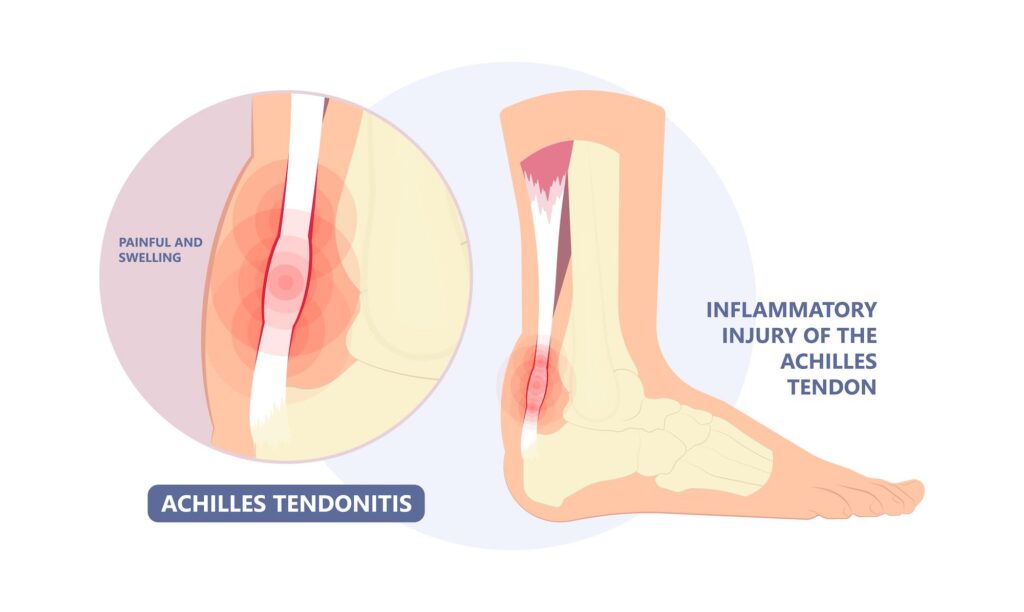Achilles tendinitis is a painful condition that can limit your ability to walk or put weight on your foot. Even simple activities like walking or standing can become difficult.
What is Achilles Tendinitis?
The Achilles tendon is the largest tendon in the body and is responsible for helping you lift your heel off the ground when you walk or run. Achilles tendinitis is a condition that results when this tendon becomes inflamed or irritated.
The most common symptom of Achilles tendinitis is pain along the back of your heel and lower leg.

What Causes Achilles Tendinitis?
Most often, Achilles tendinitis is caused by overuse of the Achilles tendon. This can happen if you suddenly increase the amount or intensity of your exercise without giving your body time to adjust. It can even happen from too much running or jumping or from wearing shoes that do not provide enough support.
Achilles tendinitis can also be caused by an injury to the tendon, such as a tear.
How is Achilles Tendinitis Diagnosed?
To diagnose Achilles tendinitis, we’ll review your symptoms and medical history, as well as a physical examination. Likely, an imaging test will also be ordered to take a closer look at the tendon and confirm the diagnosis.
What is the treatment for Achilles Tendinitis?
Initial treatment for Achilles tendinitis typically includes rest, ice, physical therapy, and anti-inflammatory medication.
It is important to see a doctor that can diagnose the severity and provide you with the proper treatment options available to you.
Achilles tendinitis can be a difficult condition to live with, but there are new and effective treatment options available that can help.
PRP for Achilles tendinitis:
Platelet-rich plasma (PRP) is a relatively newer treatment option for Achilles tendinitis. PRP is a concentration of platelets, which are the cells that help with clotting and healing. PRP uses the patient’s own blood to help speed up the healing process.
Orthopedic stem cell therapy:
Stem cell therapy is another newer treatment option for Achilles tendinitis. In this procedure, orthopedic surgeons inject stem cells into the damaged tendon. Orthopedic stem cell therapy uses cells from the patient’s bone marrow to promote healing.
Both PRP and Orthopedic Stem Cell therapy have been shown to help with Achilles tendinitis. Both PRP and orthopedic stem cell therapy are minimally invasive procedures with few side effects. They are often recommended for patients who have not had success with other treatments, such as rest, ice, and anti-inflammatory medication.
When should I see a doctor?
If you think you may have Achilles tendinitis, early diagnosis and treatment are important to avoid more serious complications. Achilles tendinitis can be a difficult condition to deal with. The pain can be severe, and it can make it hard to walk or even stand. The tendon can rupture, which requires surgery to repair. There is also a risk of infection if the tendon ruptures.
If you have Achilles tendinitis that has not responded to conservative treatment, you may be a candidate for surgery. The goal of surgery is to remove the damaged tissue and repair any tears in the tendon. Recovery from Achilles tendinitis surgery can take several months.
Early diagnosis can often prevent the need for surgery and allow for less invasive treatment options to be available to you, such as PRP and Orthopedic stem cell therapy, with faster healing and recovery time.
If you are suffering from this condition and would like to discuss your options, please contact me to schedule an appointment. I would be happy to help you find the best treatment for your needs and get you back on your feet!
